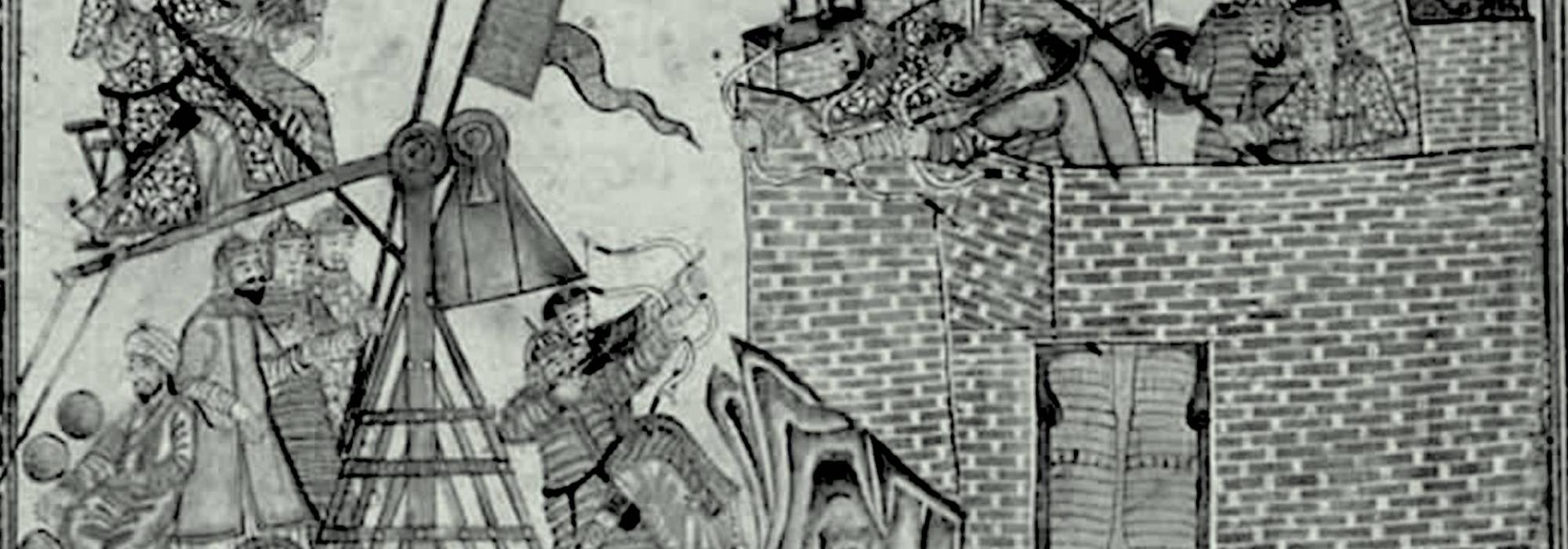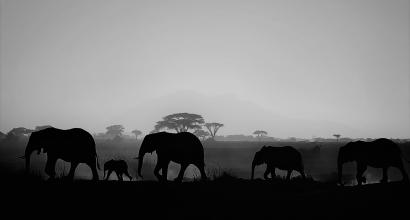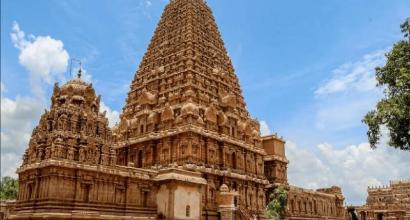Karnataka’s celebrated polymath, D V Gundappa brings together in the eighth volume of reminiscences character sketches of his ancestors teachers, friends, etc. and portrayal of rural life. These remarkable individuals hailing from different parts of South India are from the early part of the twentieth century. Written in Kannada in the 1970s, these memoirs go beyond personal memories and offer...
The Awareness of Kshaatra at all levels
It is because the fundamental root of Hinduism is Adhyatma (spirituality, self knowledge, study and evolution of oneself) that we have been elaborating all this while on the awareness of kshaatra in the tradition of Sanatanadharma. In his work Indian Muslims: Who are they?, K S Lal discusses at length who the Indian Muslims are and what their origins are. On this subject, the earliest evidence we get is from Alberuni, a traveller who came to India during the time of Mahmud of Ghazni. He has left behind several records. Ghazni Mahmud told the Caliph, "Every time I invade India and attack the people, I will earn the title 'Ghazi'. I will make Dar-ul-Harb (the land of war, i.e. the land of the infidels) into Dar-ul-Islam (the land of Islam)." Ghazni's court scholar was Alberuni. It appears that he also learnt some Sanskrit. He says, "In matters of dharma, Hindus are different from us. In matters of faith and theology, they don't have too many differences in opinion. All their sectarian fights and quarrels are only verbal and never go to the extent of killing each other or usurping the other's property. They are different from us in every way. They have a sense of fear about us. Even so, they have prohibited marriage or any other sort of relationship with our people. They are forbidden to even eat or drink with us. In summary, when it comes to matters of dharma, the Hindus prefer to discuss about it peacefully. They believe in freedom of practising a chosen faith and give a lot of importance to evolution of the self. They harbour hatred against those who kill in the name of religion. They also keep away people who try to convert them."
In those days, it was nearly impossible to convert people to Islam through temptations, gifts, and sweet words; they had to use force and violence. Even a person from the lowest varna had firm belief in his dharma and his jati framework. A Christian missionary/traveller Govi says that nobody in India voluntarily converted to Christianity.
Marco Polo, who came two hundred years after Alberuni, says: "And about that race of Govis [also known as the Pariahs; down-trodden Dalits of Tamil Nadu], I should tell you that nothing on earth would induce them to enter the place where Messer St. Thomas is – I mean where his body lies, which is in a certain city of the province of Ma'abar [Tamil Nadu]. Indeed, were even 20 or 30 men to lay hold of one of these Govis and to try to hold him in the place where the Body of the Blessed Apostle of Jesus Christ lies buried, they could not do it!"
Sheikh Nizamuddin Aulia of the fifteenth century writes, "However much we preach our religion, the minds of these people are not influenced by Islam. Even those from the lowest jatis have firm belief in their dharma and pride in their jati; they simply refuse to convert to Islam."
Manucci writes, "The jati-paddhati has given them (Sanatanadharmis) a freedom and respect that no other establishment was able to give.
"Muslims from outside this land look upon Indian Muslims with disdain and scorn. Further, the Muslims who were converts from Hinduism were never placed in a high rank or given a top position. The higher officials were always blue-blooded Turks or Muslims from outside India.
"Aurangzeb, in the position of Samrat, himself converted three kings by offering them great rewards; however, they were unhappy because after converting to Islam they received no respect. They regretted their actions. Therefore, it was impossible for people from lower varnas to find any equality under Muslim rule even if they converted."
Any conversion to Islam would happen only by the use of force and violence. During the reign of Akbar, several people returned to the Hindu fold. To stop this, during the time of Jehangir, life imprisonment was the punishment for apostasy. And by the time of Shahjahan, if anyone tried to commit the grave crime of returning to the Hindu fold, he was punished with death.
We have several records and evidences to show that conversion was purely because of the force of the barbaric Islamic zealots and had little to do with the so-called caste system or the behaviour of brahmanas.
To protect the kshaatra-dharma of Bharata, people from all varnas, particularly the lower varnas, have toiled indefatigably. In another book, Growth of Scheduled Tribes and Castes in Medieval India, K S Lal gives evidences of which specific backward communities and lower varnas have toiled for the strengthening of Sanatana Dharma. He writes, "In Eastern India, the tribal populations such as the Garo, Rabhana, Meccha, Mikril, Liyingo, Lushayya, Khoch, Manipura, Naga, Miri, and Ahoms were all Hindus.
"In Central India, warrior tribes like the Bhils, Gonds, Saharyas, and Haihayas or Chedis, as well as the Rajputs are all adherents of Hindu dharma. The Paramaras of Dhara, the Tonvars of Gwalior, the Khacchavahas of Narvad, the Rathores of Kannauj, the Chandelas of Kalinjar, all of them were Sanatanadharmis. The people respected them as sukshatriyas (noble kshatriyas).
"The Jats, Khobars, Gonds, Orvars, Yadavas, Mulas, Teras, Madigas, Maras, Mangas, Danagars, Salas, Gondals, Lambanis, Banjaras, Pinjaras, and other communities from Central and South India.
"Mali, Kacchi, Gadri, Dhakar, Telga, Sonar, Darji, Bhanda, Hajam, Navi and other groups are from Western India. Even in North India, there were several communities that were from the kshatriya lineages.
In Varanasi, the Brahmanas were slightly larger in number as compared to the Chammaras. In all other districts, the Chammaras were larger in number. Chammaras were larger in number even in Rajasthan, Gujarat, Kutch, and in the South. There are a few instances of Brahmanas succumbing to pressure, seduction, and violence but the Chammaras never allowed themselves to be infected by conversion. For example, in the district of Muzzaffarnagar, there are 29,000 Hindu Rajputs and 24,000 Muslim Rajputs according to the census. The Rajputs, who were solely in love with the lands they owned, converted to Islam in order to save their lands. For instance, when King Haradatta of the Northeastern kingdom of Bulanchar heard about the attack of Ghazni Muhammad, he felt that it is important to hold on the life that god has given him and so he agreed to convert; along with ten thousand people, he embraced Islam. But people from lower varnas did not agree to convert to Islam. Therefore, there is no group such as Muslim Chammaras in Uttar Pradesh."
Thus, the great scholar K S Lal has put together several records and presented them. Other notable scholars who have written about this include Sita Ram Goel and Arun Shourie.
In India, we call Patanjali, Vararuchi Katyayana, and Panini as the muni-traya (three great sages) of grammar; in the Shaankara-darshana School, we hail Gaudapada, Adi Shankara, and Sureshvara as the muni-traya; similarly, in the field of (alankara-shastra) Indian aesthetics, Bharata, Anandavardhana, and Abhinavagupta (or Kuntaka) are hailed as the muni-traya. In modern India, in matter pertaining to national importance, one can call Ram Swarup, Sita Ram Goel, and Arun Shourie as the muni-traya.
To be continued












































